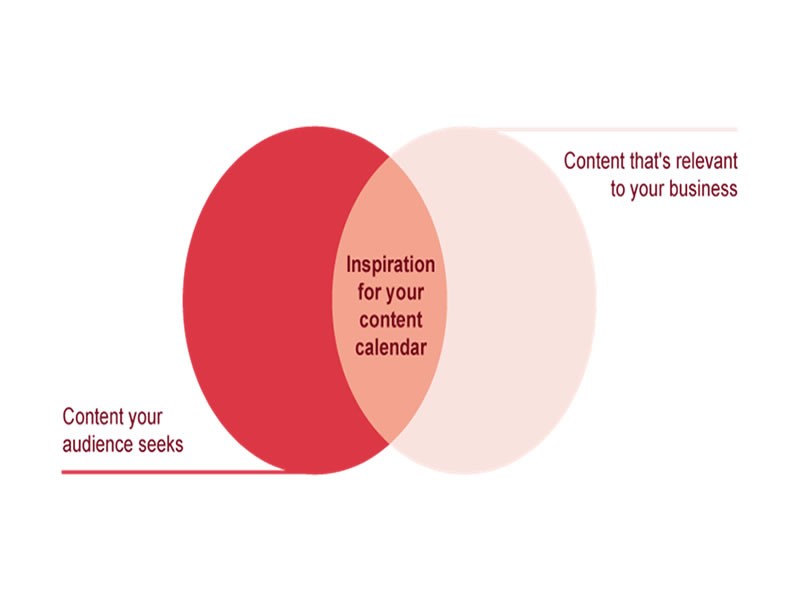Insight Blog
Agility’s perspectives on transforming the employee's experience throughout remote transformation using connected enterprise tools.
5 minutes reading time
(1057 words)
6 Reasons Why Your Business Needs to Reimagine its Content Calendars Ahead of the New Year
One of the premium benefits of using a content calendar is that it makes it easy to compare your progress, here are 6 reasons for the year ahead.
Getting content right is easier said than done. For small businesses in particular, the act of setting up a coherent content schedule that's bound to inspire your customers and generate leads can be time consuming and difficult to pull off. However, with the right content calendar in place, the challenge of generating the right level of appeal to your audience can be simplified.
But what makes a good content calendar?
And how can businesses create a flawless calendar that delivers engaging and inspiring content to those who are ready to turn their interest into purchase intent? Let's take a deeper look into six reasons why your business needs to reimagine its approach to content calendars:
- Define and Scrutinise your Goals
Too many businesses concern themselves with creating content for the sake of it. Yes, you need content, but it's not worth much if it's not reaching the relevant audience.
Revise and scrutinise your content goals. Are you intending to use content to guid visitors to your website? Gain new visibility? Or bolster your social media presence? The answer to these questions should heavily impact the type of content you produce.
Defining your goals should count as the first step towards building and implementing a content calendar. You're only wasting resources by putting out content that won't actually benefit your company. In establishing content goals, all areas of your business should be in tune with your approach and what's expected of them.
2. Build your Timelines well in Advance
It's not enough to plan workflows and allocate them to different days, weeks, or months. It's important to consider how long it will take to complete each step, and whether you can build expectations regarding time frame based on past data.
Consider factors like the complexity of your content, the time it will take for your work to be completed, and how long it will take to edit.
Your timelines will also need to take many internal and external company factors into account, including:
Internal:
- New product launches
- Seasonal campaigns
- Relevant company events
- Special content series
External:
- Key industry events
- Relevant emerging industry news stories
- Wider local, national, global news and events
- National and international holidays
- Emerging social media trends
3. Incorporate the Right Tools to Help
If you're not using the tools available to you for creating, managing, and collaborating on your content calendar, you're putting yourself at a significant disadvantage–particularly if you're based in a competitive industry.
Fortunately that are many options that businesses can adopt, which can vary in cost depending on how much you're willing to spend, and can cover a variety of functions, they include:
- Notion: an all-in-one workspace for notes, task management, and databases
- Google Sheets: a free solution offering spreadsheets for teams
- Microsoft Excel: for comprehensive spreadsheet management
- Google Calendar: offering high-quality advanced scheduling for smaller operations
- Coschedule: for full premium quality editorial calendars that can span large enterprises
- Loomly: offering interactive guides for building blog posts, automated publishing on socials, and more social-facing functions
- Editorial Calendar for WordPress: for simple drag-and-drop calendar options
There are many other collaborative options for businesses to adopt, like Monday, Slack, Trello, and Basecamp–all of which can help with task management and delegation.
4. Craft Your Calendar the Right Way
There are many great low-cost platforms that enable you to create high-quality content calendars with ease.
HubSpot, for instance, offers a solid template that can be downloaded for free, while Google Drive also features free options for personal use–with prices for businesses starting at $6 per month.
If you're looking to build engaging content calendars that can be shared throughout your company in a well presented and more formal manner, Powered Template offers a range of eye-catching slides that are professionally pre-prepared for users to add content and edit as they wish.
All business needs can vary, and your company may be better off utilising a different template to one that may help a similar sized business in a different industry. This means that it could be worth doing some research into the best approach to take–but there are certainly many cheap or free options available.
5. Create a Virtual Space to Store Content Ideas
Never let your ideas that didn't make the grade in the past vanish completely. Industries change rapidly and what seemed too ambitious or too difficult two months ago may become far more relevant and practical today.
Record all of your content ideas and the results of brainstorming sessions in order to build a pool that can be tapped into over the coming weeks, months, and years. You may be surprised at just how much inspiration you can find from recording your blue-sky thinking.
6. Work on Building Your Creativity
The great thing about setting up a content calendar in good time ahead of the new year is that it covers the practical side of content creation, leaving marketing teams to focus more heavily on their creativity when it comes to approaching topics.
Looking ahead to your earmarked campaigns, you can ask yourself questions like 'what content would pave the way for more conversions?', and 'what questions are my customers asking about Topic A, or Topic B?'.
By looking at what exactly you can teach your audience, or at what they would want to know about, you can apply more time and effort to covering creative campaigns geared towards better engagement.
Couple your ideas with keyword searches to see what you can rank higher for on Google's SERPs, and your brand is likely to reach more users and generate more leads on a consistent basis throughout the year ahead.
Although the task of managing content in advance is easier said than done, incorporating the right tools to create a comprehensive content calendar can be a sure-fire way to take your business to the next level. Whether it paves the way to transform interest into purchase intent, or intent into conversions, with a suitable calendar you can better secure your growth through a year of successful content campaigns.
Categories
Blog
(2620)
Business Management
(320)
Employee Engagement
(210)
Digital Transformation
(175)
Growth
(119)
Intranets
(119)
Remote Work
(61)
Sales
(48)
Collaboration
(37)
Culture
(29)
Project management
(29)
Customer Experience
(26)
Knowledge Management
(21)
Leadership
(20)
Comparisons
(6)
News
(1)
Ready to learn more? 👍
One platform to optimize, manage and track all of your teams. Your new digital workplace is a click away. 🚀
Free for 14 days, no credit card required.

















